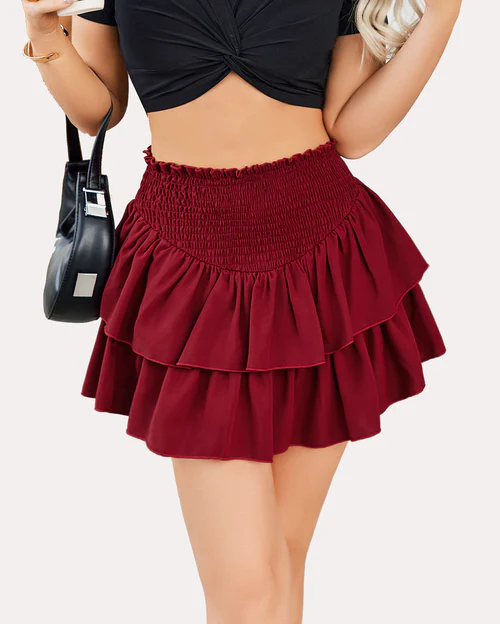The Evolution of Skirt Lingerie in the Fashion Industry
The fashion industry has witnessed numerous transformations over the centuries, and one of the most intriguing evolutions is that of skirt lingerie. This unique garment, which blends the elegance of skirts with the intimate allure of lingerie, has a rich history that reflects broader societal changes and fashion trends.

Historical Roots of Skirt Lingerie
The origins of skirt lingerie can be traced back to the Victorian era, a time when modesty and elaborate undergarments were paramount. Women wore multiple layers of petticoats and crinolines beneath their skirts, creating voluminous silhouettes. These early forms of skirt lingerie were designed to enhance the shape of outer garments while maintaining a sense of propriety.
As the 20th century dawned, the fashion landscape began to shift. The flapper era of the 1920s brought about a desire for more freedom and less restrictive clothing. Skirt lingerie evolved to become lighter and more functional, with slips and chemises replacing the cumbersome layers of the past. This period marked the beginning of a more practical approach to intimate apparel.
Mid-Century Modernization
The mid-20th century saw significant changes in the fashion industry, driven by technological advancements and changing societal norms. During the 1950s, skirt lingerie became more streamlined and sophisticated. The introduction of synthetic fabrics like nylon allowed for the creation of lightweight, durable, and comfortable undergarments. This era also saw the rise of the iconic pencil skirt, which required seamless and form-fitting lingerie to maintain a sleek silhouette.
By the 1960s and 1970s, the women's liberation movement had a profound impact on fashion. Skirt lingerie became a symbol of empowerment and self-expression. Designers experimented with bold colors, patterns, and innovative designs, reflecting the spirit of the times. The mini-skirt revolution further pushed the boundaries, necessitating the development of shorter, more versatile lingerie options.
Contemporary Trends in Skirt Lingerie
In the 21st century, skirt lingerie has continued to evolve, embracing both tradition and innovation. Modern designs often blend vintage aesthetics with contemporary functionality. High-waisted skirts with built-in shapewear, for example, offer a nod to the past while catering to the needs of today's fashion-conscious consumers.
One notable trend is the fusion of lingerie with outerwear. Skirt lingerie is no longer confined to the realm of undergarments; it has become a fashion statement in its own right. Sheer skirts, lace overlays, and intricate detailing are now commonly seen on runways and in everyday fashion. This blurring of boundaries between lingerie and outerwear reflects a broader trend towards versatility and individuality in fashion.
The Future of Skirt Lingerie
As we look to the future, the evolution of skirt lingerie in the fashion industry shows no signs of slowing down. Sustainability and ethical fashion are becoming increasingly important, and designers are exploring eco-friendly materials and production methods. Additionally, advancements in technology, such as 3D printing and smart textiles, hold the potential to revolutionize the way skirt lingerie is designed and manufactured.
Moreover, the fashion industry is becoming more inclusive, with a growing emphasis on diversity and body positivity. Skirt lingerie is evolving to cater to a wider range of body types and personal styles, ensuring that everyone can find garments that make them feel confident and beautiful.
Conclusion
The evolution of skirt lingerie in the fashion industry is a testament to the dynamic nature of fashion itself. From its modest beginnings in the Victorian era to its current status as a versatile and empowering garment, skirt lingerie has continually adapted to meet the changing needs and desires of consumers. As we move forward, it will be fascinating to see how this unique fusion of skirts and lingerie continues to evolve, reflecting the ever-changing landscape of fashion.
